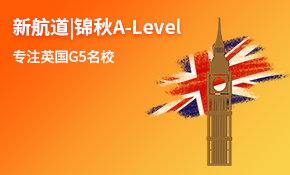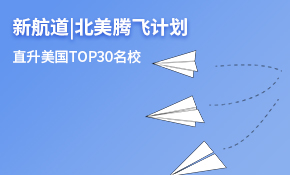托福TPO48听力题目+答案
Conversation1
1. Why does the student go to the employment office?
A. To get feedback from his previous supervisor
B. To try to have his work hours reduced
C. To find out about getting an on-campus job
D. To compare various job offers that he has received
2. Why does the university employee seem surprised at the student’s request for on-campus jobs?
A. Because she knows he is interested in off-campus jobs
B. Because she expected him to apply earlier in the semester
C. Because she knows he recently quit an on-campus job
D. Because she thought he already had an on-campus job
3. What does the student imply about the job he had at the library last year?
A. It did not require as much training as jobs in restaurants.
B. It did not pay as well as jobs in restaurants.
C. It offered a flexible work schedule for students.
D. It convinced him to become a librarian in the future.
4. Why does the student mention his friend Suzanne?
A. To compare his restaurant job with her job at the photograph lab
B. To suggest that he wants to work with her
C. To explain why students do not want to have janitorial jobs
D. To explain why he thinks there is a job opening
5. What can be inferred about the woman when she says this:
?
A. She believes that there is no way to confirm that information.
B. She is concerned about information security.
C. She doubts the accuracy of the information.
D. She does not find the information helpful.
Conversation2
1. What are the speakers mainly discussing?
A. Whether the student should specialize in English drama or in Polish literature
B. Whether the student should take an advanced course in Polish drama
C. Whether the student can learn about Polish history by taking courses in Polish literature
D. How the student can improve his Polish language skills
2. According to the professor, what will students do in her class?
Click on 2 answers.
A. Perform scenes from Polish plays
B. Translate Polish texts into English
C. Use the Polish language in class discussions
D. Watch recorded performances of Polish plays
3. Why is the student interested in the professor’s class?
Click on 2 answers.
A. He wants to learn about his family background.
B. He already has the language skills needed for the class.
C. The professor has a reputation as an expert on Poland.
D. The course is related to the student’s intended course of study.
4. What does the professor think the student should do?
A. Take a Polish language course, then take a Polish drama class
B. Take a Polish language course, then take a survey of Polish literature
C. Take a Polish drama course and a literature course at the same time
D. Take a survey course in Polish literature before taking a Polish drama course
5. What does the professor imply when she says this:
?
A. Many of her students find it easier to read Polish than to speak it.
B. The student will probably enjoy the plays her class will read.
C. She is concerned that the student may not be able to read Polish.
D. The student will quickly gain confidence in his ability to read Polish
Lecture1 (Art History)
1. What aspect of Georgia O’Keeffe’s work do the speakers mainly discuss?
A. The kinds of objects that she selected for her paintings
B. The influence of her painting style on photography
C. The major abstract elements in her photographs
D. The techniques that contributed to her distinctive style
2. According to the professor, what characteristics of Large Dark Red Leaves on White indicate that it could not be a photograph?
Click on 2 answers.
A. It depicts leaves in a setting that appears to be abstract.
B. It is larger than most photographs of the time.
C. It shows less realistic detail than a photograph does.
D. It included colors that could not have been reproduced in a photograph.
3. According to the professor, what principles did Arthur Wesley Dow emphasize in his art classes?
Click on 2 answers.
A. Focusing on simple forms
B. Using color to reveal the essence of an object
C. Separating a form from its natural surroundings
D. Exaggerating the size of a form
4. In his discussion of O’Keeffe’s style, why does the professor describe Large Dark Red Leaves on White?
A. To give an example of a painting that was copied from a photograph
B. To give an example of an abstract interpretation of real objects
C. To point out that some of O’Keeffe’s subjects were represented in their natural setting
D. To point out the similarities between O’Keeffe’s works and works of other artists
5. According to the professor, what effect did O’Keeffe expect her paintings to have on viewers?
A. The paintings would create the same personal associations as they did for O’Keeffe.
B. The paintings would make people see ordinary things in a new way.
C. The paintings would mistakenly be seen as photographs.
D. The paintings would inspire an appreciation for nature.
6. Why does the professor say this:
?
A. To emphasize a point that he made earlier about O’Keeffe’s works
B. To emphasize that the student should have observed the painting more closely
C. To indicate that the student’s conclusion about O’Keeffe was not foolish
D. To indicate that he had not understood the student’s point about the painting
Lecture2 (Earth Science)
1. What is the lecture mainly about?
A. Ways to determine the ages of volcanic islands
B. Criteria for classifying various types of volcanoes
C. Explanations for why volcanoes occur in some locations
D. Methods for measuring magma produced by volcanoes
2. According to the professor, why was the hot spot theory originally proposed?
A. To explain prolonged volcanic activity far from plate boundaries
B. To explain why volcanoes form both on land and in the ocean
C. To explain variations in the amounts of magma produced by volcanoes
D. To explain why volcanoes may become inactive after millions of years
3. Why does the professor describe moving a sheet of heavy paper over a candle?
A. To clarify that plumes do not produce great amounts of heat
B. To describe an experiment he would like the students to conduct
C. To illustrate one hypothesis for the way some volcanic anomalies are formed
D. To emphasize the thinness of some of Earth’s tectonic plates
4. Why does the professor discuss how high one of the Hawaiian Islands rises above the ocean floor?
A. To provide evidence supporting the plume hypothesis
B. To compare the Hawaiian Island to other volcanic islands in the Pacific Ocean
C. To point out a common difference between volcanic mountains and other types of mountains
D. To emphasize that hotspot volcanoes can produce large amounts of magma
5. According to the crack hypothesis, what causes a hot spot?
A. Hot magma rises from deep in Earth to melt a piece of the crust.
B. Hot magma flows out through a break in the side of an active volcano.
C. Hot magma flows up through spaces created between tectonic plates as they move.
D. Hot magma flows up at a point where a tectonic plate has been stretched thin.
6. What is the professor’s opinion of the two main hypotheses he presents?
A. Neither hypothesis can explain the formation of the Hawaiian Islands.
B. Each hypothesis accounts for some, but not all volcanic anomalies.
C. Each hypothesis explains the formation of more volcanoes than plate tectonics does.
D. The studies supporting the crack hypothesis are more convincing than those supporting the plume hypothesis.
Lecture3 (Biology)
1. What is the professor mainly discussing?
A. Different ways that scientists use the term “symbiosis”
B. A specific kind of symbiotic relationship between organisms
C. A butterfly species that competes with another insect species
D. Reasons why symbiosis is considered a subtyle of mutualism
2. What does the professor imply about the term “symbiosis”?
A. It is often used with too narrow a meaning.
B. It is used incorrectly in the students’ textbook.
C. The original definition is difficult to understand.
D. It is applied only to organisms of the same species.
3. How do the butterflies mentioned by the professor facilitate the relationship between caterpillars and ants of a certain species?
A. The butterflies have a sweet smell that attracts the ants.
B. The butterflies lay their eggs under rocks where the ants lay their eggs.
C. The butterflies lay their eggs on plants where the ants are present.
D. The butterflies identify a food source for both ants and caterpillars.
4. In the example the professor mentions, how do the ants benefit from their interaction with the caterpillars?
A. The caterpillars protect the ants’ eggs from predators.
B. The caterpillars help the ants find a particular plant.
C. The caterpillars produce a liquid to prevent ants from getting infections.
D. The caterpillars produce a liquid from a species gland to feed the ants.
5. What aspect of mutualism does the professor illustrate with the example of the caterpillars and the ants?
A. Both organisms need the relationship for survival.
B. It is not necessary for both organisms to benefit equally from the relationship.
C. There is more benefit for the organism that is less dependent on the relationship.
D. The relationship does not need to be beneficial to both organisms.
6. What can be inferred about the student when she says this:
?
A. She needs more time to think about the answer.
B. She is almost certain that caterpillars produce honey.
C. She thinks her statement may be misunderstood.
D. She doubts that her statement is correct.
Lecture4 (American History)
1. What is the lecture mainly about?
A. Ways that new managerial techniques hastened the industrialization of American society in the nineteenth century
B. Ways that the United States government tried to regulate business practices in the nineteenth century
C. Reasons that business leaders gained political power in the late nineteenth-century United States
D. A comparison of the management styles of Andrew Carnegie and John D. Rockefeller
2. Why does the professor discuss vertical integration?
A. To explain how Andrew Carnegie gained control of the steel industry
B. To describe the most typical organization for businesses in the nineteenth century
C. To explain how John D. Rockefeller organized the oil industry
D. To explain the origins of the business trust
3. In what two ways did business leaders make a positive contribution to the United States in the nineteenth century?
Click on 2 answers.
A. They invested in new production technologies.
B. They raised wage levels.
C. They improved safety conditions.
D. They supported charitable causes.
4. According to the professor, what is the main reason that some businesses were able to become powerful during the nineteenth century?
A. The government assisted businesses when they had financial difficulties.
B. Taxation was based upon the profitability of a business.
C. The government did not impose many regulations on businesses.
D. Some government officials once held influential positions in large businesses.
5. Why did the government pass new laws aimed at businesses?
A. To correct mistakes made by the judicial system
B. To respond to complaints from the public
C. To increase employment rates
D. To increase tax revenue from large industries
6. What does the professor imply about the term “trust” when she says this:
?
A. She should not have mentioned the term.
B. It is unnecessary to explain the details of the term.
C. She wants the students to explain the term to her later.
D. She wants to discuss a different term.
托福TPO48听力答案
CONVERSATION2:1.B 2.CD 3.AD 4-5.DC
LECTURE1:1.D 2.BD 3.AC 4-6.BBC
LECTURE2:1-6.CACDDB
LECTURE3:1-6.BACDBD
LECTURE4:1-2.CA 3.AD 4-6.CBB
















